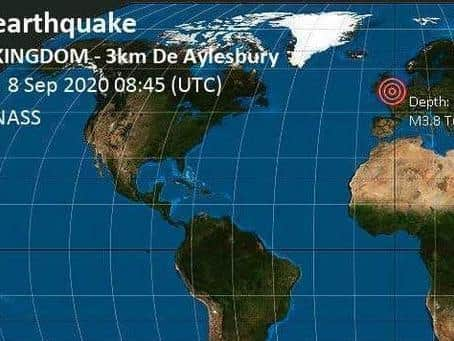Could there be aftershock in Milton Keynes following 3.3 magnitude earthquake?
and live on Freeview channel 276
The earthquake in Leighton Buzzard was recorded at 3 on the European Macroeismic Scale and 3.3 on the Richter magnitude scale.
This means it was a minor earthquake, and the vibration from the main shock would have been weak and felt indoors by a few people, according to the British Geological Survey.
What is aftershock?
Advertisement
Advertisement
Aftershock is a smaller earthquake that follows a larger earthquake, in the same area of the main shock, caused as the displaced crust adjusts to the effects of the main shock.
Large earthquakes can have hundreds to thousands of instrumentally detectable aftershocks, which steadily decrease in magnitude and frequency according to known laws.
Aftershocks are said to be dangerous because they are usually unpredictable, can be of a large magnitude, and can collapse buildings that are damaged from the main shock.
Following a large earthquake and aftershocks, many people have reported feeling 'phantom earthquakes' when no earthquake was taking place. This condition, known as 'earthquake sickness', is thought to be related to motion sickness and usually goes away as seismic activity decreases.


Advertisement
Advertisement
The rate of aftershocks decreases quickly with time, according to Omori's Law. This law says that whatever the probability of an aftershock are on the first day, the second day will have half the probability of the first day and the tenth day will have approximately a tenth of the probability of the first day.
The other main law describing aftershocks is known as Båth's Law, which states that the average difference in magnitude between a mainshock and its largest aftershock is 1.2, regardless of the mainshock magnitude.